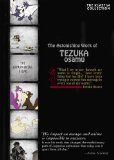| Reviews & Columns |
|
Reviews DVD TV on DVD Blu-ray 4K UHD International DVDs In Theaters Reviews by Studio Video Games Features Collector Series DVDs Easter Egg Database Interviews DVD Talk Radio Feature Articles Columns Anime Talk DVD Savant Horror DVDs The M.O.D. Squad Art House HD Talk Silent DVD
|
DVD Talk Forum |
|
|
| Resources |
|
DVD Price Search Customer Service #'s RCE Info Links |
|
Columns
|
|
|
Astonishing Work of Tezuka Osamu, The
THE MOVIE:
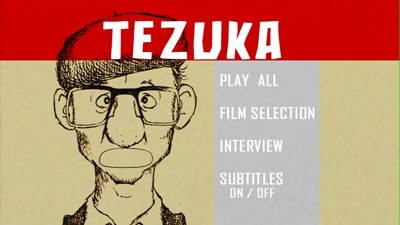
Osamu Tezuka has been called many things, though his most well-traveled tags are variations on "the father of manga" and "the Walt Disney of Japan." He redefined entertainment in postwar Japan, creating new genres of comics and changing how his countrymen approached cartooning. His most famous creation is Astro Boy, which debuted as a manga character in 1952 before moving to television ten years later. The popularity of the character endures to the point that a new animated film featuring the battlin' boy robot is due later this year, and Viz Comics is currently serializing Naoki Urasawa's cover version, Pluto, in the U.S. (That series could not receive a higher recommendation from this writer; seek it out.)
Yet, to limit Tezuka to just Astro Boy would be to do him a disservice. As an artist, he was constantly reinventing himself, always coming up with something new, be it fictionalized, abstracted biographies of characters as different as Hitler and Buddha, adult sci-fi like Apollo's Song, or his samurai freakout Dororo. His work has always been known of in the states, but it's only been in the last decade that publishers have begun importing it in earnest, finally letting general audiences see what all the fuss is about.
One of the most surprising discoveries in the spate of recent stateside Tezuka releases is this Kino DVD, The Astonishing Work of Tezuka Osamu. A collection of thirteen animated films by the famed creator, dating from 1962 to 1988, these experimental, playful slices of whimsy show what an expansive creator Tezuka really was. Fun, stylish, and thoughtful, these cartoons show that Tezuka clearly had a problem sitting still. He had plenty he wanted to say, and plenty he wanted to show. The artist exhibits an unstoppable desire to go out on any creative limb that struck his fancy, and much of his work here reminds me of the similarly out-of-bounds work of Chuck Jones, stuff like "Now Hear This" or "The Dot and the Line," not beholden to any aesthetic or pre-set formula.
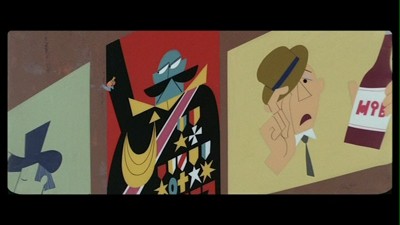
Tales of the Street Corner
* "Tales of the Street Corner" (1962; 39 minutes, 04 seconds): This long, ambitious piece of work immediately shows how far out Tezuka was willing to take his animation. Bearing little indication of his trademark style, this mini-musical looks like Mary Blair and Maurice Noble art directing the final act of An American in Paris. As the title suggests, it focuses on the happenings over a couple of days on one street corner, following a variety of characters, from the rat down low to the little girl who lives in the window way up high. There is a tree that scatters life over the city, and a wall of advertising posters that come to life and have their own interaction and drama, a la similarly styled Warner Bros. cartoons. It is here that the main story takes over. A romantic triangle between a pair of musicians and a wanton woman gives way to a larger tale of war and oppression when propaganda posters for a blue-faced dictator are pasted up in the area. Not only does he end up stifling the activities of those around him, but his real-life army rains destruction down on the city. "Tales of the Street Corner" is compassionate, gorgeous, and touching, and still not without its humor. It delivers a serious message without being too serious about it.
* "Male" (1962; 3 mins. 09 secs.): This quick feature is told as a series of cameos roving a fairly static scene, narrated by a cat perplexed by his owner's behavior, and leading to an unpredictable punchline. Much of the story is told with sound effects, again similar to Chuck Jones of the period.
* "Memory" (1964; 5 mins. 40 secs.): Similar to old Looney Tunes or Tex Avery travelogues in structure, but reminiscent of Python-era Terry Gilliam in the way much of the film is done with photos manipulated against a cartoon background. Adult humor toys with the vagaries of memory, showing the tricks we play on ourselves using inventive visual gags, and even imagining how humanity might be remembered in the future.
* "Mermaid" (1964; 8 mins. 17 secs.): A delicate fantasy about a boy who finds a mermaid but the world won't believe him. Told as a silent film with music, using an open linework style, it creates a childish, primitive mood while still having a very grown-up message about imagination and conformity. Side note: The subtitles for the title cards seemed to be mistimed, showing up long after each title card had already passed.
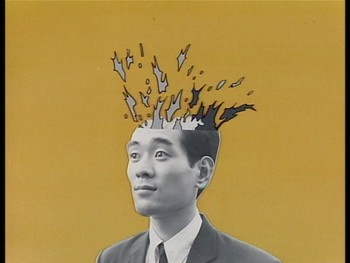
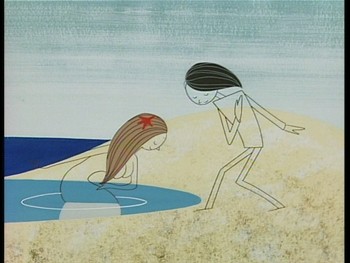
Memory; Mermaid
* "The Drop" (1965; 4 mins. 18 secs.): An amusing lark about a man stranded on a boat desperate for drinking water. A rough style, primitive like "Mermaid," but less elegant by intention. Amusing, but it doesn't have the most original joke at the end, nor is it as visually pleasing as most of the other films.
* "Pictures at an Exhibition" (1966; 32 mins. 56 secs.): This piece is a collection of 10 tongue-in-cheek shorts profiling modern "heroes," different types of figures such as architects and doctors and even "TV talent" featured in humorous vignettes showing what they are like/how they are perceived in the present day (or, to be exact, the mid-1960s). The options Tezuka has are shown as portraits on the wall in a real, live-action museum, the camera panning across the display and zooming in on each subject. All the films have their own distinctive style, ranging from classical, fully rendered animation to more sparse line drawings. My favorite is the "Beatnik," whose portrait is brought to life by a group of differently colored baby chicks battling it out in some West Side Story choreography. All the pieces come together in one "allegorical conclusion" where Tezuka plays up the collective bluster for a silly operatic ending.
* "The Genesis" (1968; 4 mins. 2 secs.): An irreverent telling of the first book of the Bible, credited to director John Huston, no less! In this version, all the animals are funky looking monsters and God creates Eve before Adam, and he makes Adam out of one of her boobs. It's very funny, told mostly using static images, and even features a brief Astro Boy appearance.
* "Jumping" (1984; 6 mins. 22 secs.): The first short from the '80s, a fun concept piece following someone capable of incredible leaps. Shot from his point of view (we are in his body, use his eyes), Tezuka takes us across a variety of terrain, our jumps getting higher and wider, until we go across the whole of human experience and even below it.
* "Broken Down Film" (1985; 5 mins. 42 secs.): A cute cartoon built on the premise that this would be a short Tezuka directed in 1888, and so the silent film comes complete with image distress and projection problems--all things that the characters are aware of and interact with for most of the gags.
* "Push" (1987; 4 mins. 16 secs.): In the future, a man drives through an automated world where any change can be had at the touch of a button. Ultimately, he goes to God to get a better world, only to find another button--a very destructive one--has already been pushed, and it's too late. Like a couple of the other pieces on this disc, the anti-war message is a little surprising, but never forced.
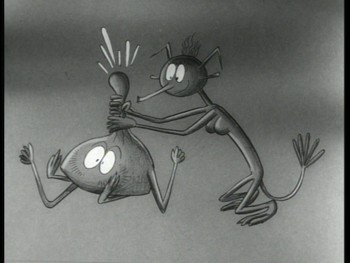
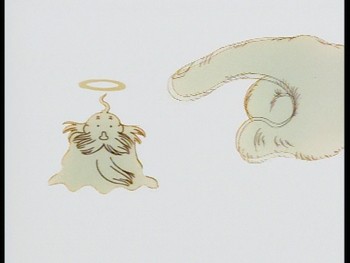
The Genesis; Push
* "Muramasa" (1987; 8 mins. 42 secs.): A poignant samurai tale about a swordsman haunted by his past. The sketchier, more realistic style reminds me of Lone Wolf & Cub artist Goseki Kojima and Vagabond creator Takehiko Inoue. Colored in a painterly fashion, and told silently with traditional music.
* "Legend of the Forest" (1987; 29 mins. 25 secs.): Set to Tchaikovsky's Symphony No. 4, this Fantasia-inspired story is both a woodland creature epic and a tribute to the history of animation. The every-shifting styles, which evolve from stationary illustrations to crude animation to full color rendering, with nods to Windsor McKay, the Flesichers, and others along the way, tells the story of a flying squirrel. The first of his kind in the area, he baffles the other animals, finds love, and tangles with a lumberjack/hunter who threatens his home and his friends. (The tree he lives in is sentient in a kind of classic, Disney sort of way; think the trees with faces in Snow White, for instance.) In the second half of the film, the individual enemy gives way to the larger enemy: progress and industry. The forest animals are also traded for magical creatures, such as fairies and elves. The overall theme is that nature will win, and as in many of the Tezuka shorts, man's folly will be his own undoing.
* "Self Portrait" (1988; 13 secs.): Short little bit of animation where a slot machine of various faces keeps rolling until Tezuka jackpot is achieved!
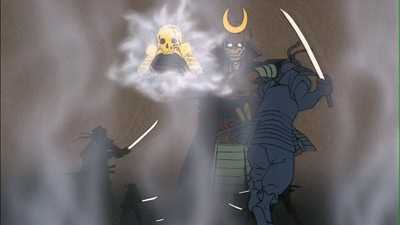
Muramasa
THE DVD
Video:
Most of the films on The Astonishing Work of Tezuka Osamu are 4:3 fullscreen, with a handful of them being in 16:9 widescreen (mainly the longer pieces). The image quality on all of them, regardless of size, is very good, with clean transfers and lovely colors. There is some slight interlacing, but otherwise, it's a spot-on job by Kino.
The films can be played all at once or chosen individually.
Sound:
These cartoons are all in Japanese, and the ones that do have dialogue come with English subtitles. The basic mixes are very good. Nothing to crow about, nothing to complain about--outside of the mistimed subtitles noted above.
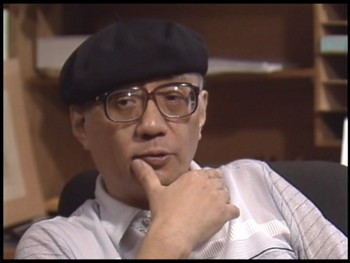
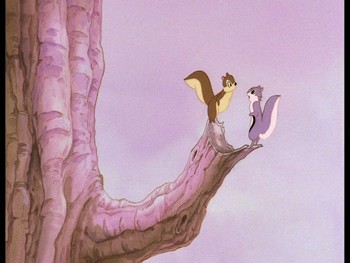
Tezuka; Legend of the Forest
Extras:
The sole extra is an nineteen-minute 1986 interview with Tezuka. He mainly talks about "Jumping," and from the way he talks, "Broken Down Film" is either in production or has been completed. The broad topic is experimental animation, and he also foresees the oncoming influence of computers on the animation industry.
FINAL THOUGHTS:
Highly Recommended. I can't think of a better descriptive to stick in the title than they already have. I found myself typing "astonishing" all throughout my review of The Astonishing Work of Tezuka Osamu, and then having to back up and delete it every time so as not to appear uncreative. This collection of 13 short films from the creator of Astro Boy spans 25 years, multiple styles, and a range of topics. They are experimental and entertaining, thoughtful and funny, a true monument to Tezuka's limitless imagination. A real surprise, and an absolute treat.
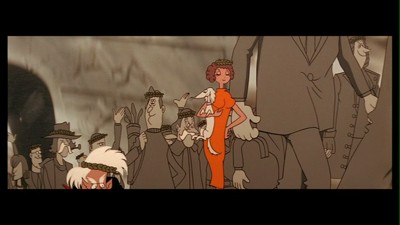
Pictures at an Exhibition
Jamie S. Rich is a novelist and comic book writer. He is best known for his collaborations with Joelle Jones, including the hardboiled crime comic book You Have Killed Me, the challenging romance 12 Reasons Why I Love Her, and the 2007 prose novel Have You Seen the Horizon Lately?, for which Jones did the cover. All three were published by Oni Press. His most recent projects include the futuristic romance A Boy and a Girl with Natalie Nourigat; Archer Coe and the Thousand Natural Shocks, a loopy crime tale drawn by Dan Christensen; and the horror miniseries Madame Frankenstein, a collaboration with Megan Levens. Follow Rich's blog at Confessions123.com.
|
| Popular Reviews |
| Sponsored Links |
|
|
| Sponsored Links |
|
|
| Release List | Reviews | Shop | Newsletter | Forum | DVD Giveaways | Blu-Ray | Advertise |
|
Copyright 2024 DVDTalk.com All Rights Reserved. Legal Info, Privacy Policy, Terms of Use,
Manage Preferences,
Your Privacy Choices | |||||||









